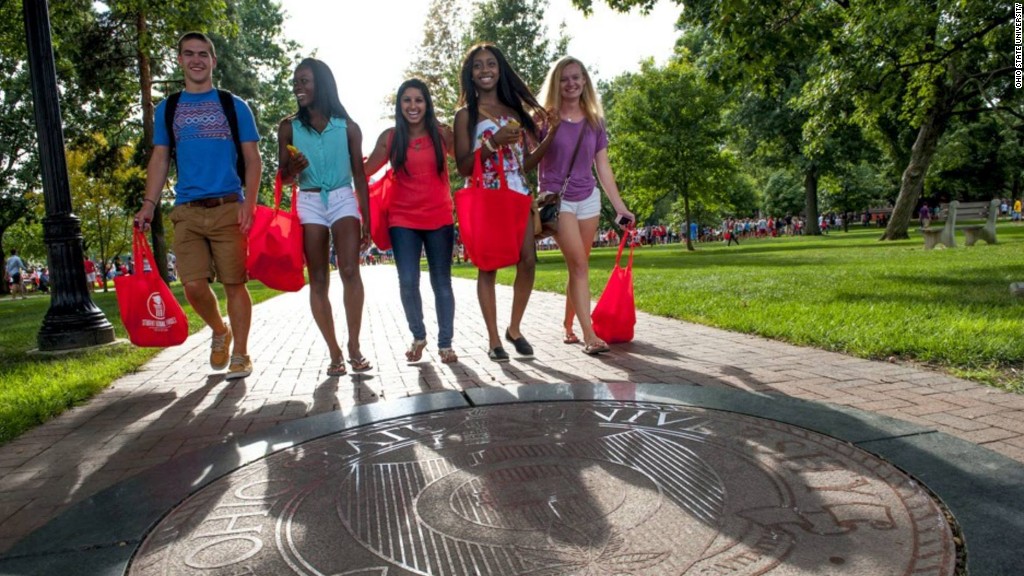
Oregon became the second state in the nation to make community college tuition-free last fall.
Nearly 7,000 students are taking advantage of the scholarship, many of whom say they wouldn't have gone to college otherwise.
But after one semester, it appears that middle- and upper-income students are receiving a majority of the money from the Oregon Promise scholarship.
It saves the richest students up to $3,248 a year while the poorest students save $1,000.
The program is expected to cost $10.9 million this year. About 60% of that money is going toward the richest 40% of enrolled students, according to a report from Oregon's Higher Education Coordinating Commission.
"There are a number of Oregon Promise students who, on paper, look like they have the means to afford college. Is that the best use of state dollars? It's an unanswered question at this point," said Andrea Henderson, Executive Director of the Oregon Community College Association.
Related: San Francisco is taxing the rich to pay for free community college
This isn't a surprise to policymakers because of the way the scholarship is structured. The poorest students are likely to already receive grants from the federal and state governments that cover the cost of tuition. The Oregon Promise kicks in after those are used.
It's the same way Tennessee's free community college program works. And it's how San Francisco will make tuition free at its community college later this year. In New York and Rhode Island, lawmakers are debating the same kind of "last-dollar" scholarship for residents at both two- and four-year colleges.
Oregon set a $1,000 minimum so that the poorest students -- who already get free tuition -- would still receive some additional money from the program to help with other costs like fees charged by the college, room and board, books, and living expenses.
The Oregon Community College Association would not have supported the program without the provision for the $1,000 minimum, Henderson said.
"It's a good start, but it's not enough. We don't want people to walk in the door to find out they can't afford to finish and then leave school without a degree and in debt," she said.
Similar students in Tennessee's program don't receive extra funds like this. As proposed, they wouldn't in New York either -- but lawmakers there are debating whether expanding an existing grant program for low-income students is a better use of state funds than making tuition free.
Related: What colleges are doing to recruit more low-income students
Early data show that the Oregon Promise was successful in getting more residents to enroll in college. Nearly 7,000 participated, beating expectations by about 1,000. (Data isn't available yet on whether more low-income students enrolled.)
A survey found that about one-quarter of participants said that without the Oregon Promise, they wouldn't have gone to college.
While increased access is important, the other goal of the program is to get these students to graduate and succeed in the job market. The thought is that both could be easier if there is less of a financial burden, said Ben Cannon, the Executive Director of the Oregon Higher Education Coordinating Commission.
He's encouraged by the fact that about 90% who enrolled this fall are taking a full-time course load. But the effectiveness of the program remains to be seen until at least the first class completes their degrees.
Related: New York Republicans have an alternative to 'free tuition'
The Oregon Community College Association would like to see policymakers drop the requirement that high school students graduate with a 2.5 GPA. Anyone who achieves at least a 2.0 can enroll at one of the state's 17 community colleges.
"That's our top priority. Community colleges are about second chances," Henderson said.
Most of the state's community college students are actually excluded from the Oregon Promise scholarship because they're older, working students returning to school. Only high school students immediately going on to college after graduation and recent GED recipients are eligible.
But including more students would increase the cost of the program.
The Oregon legislature needs to approve funding for the program every two years. It could be scaled back or expanded.
